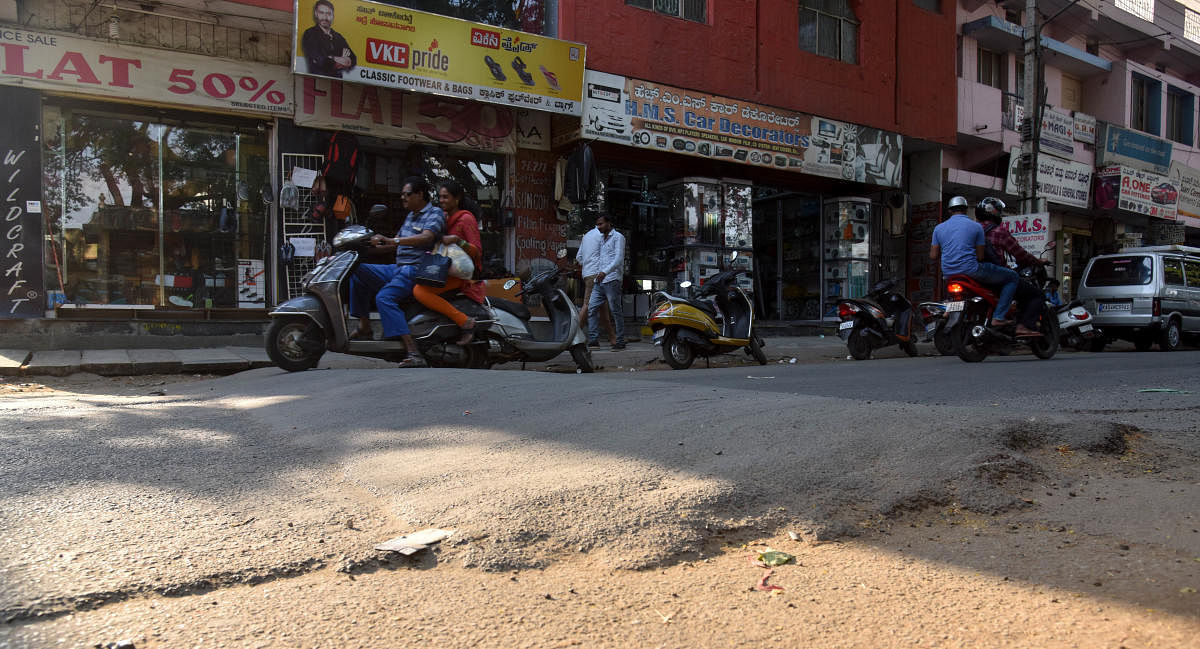
In June 2008, a man was riding a bike in Kamakshipalya. His wife and eight-month-old son were on the pillion.
The bike hit a badly built road hump and all three fell to the ground. The wife and the baby were killed on the spot. He died in hospital two days later.
Over the years, unscientific road humps have claimed many lives in Bengaluru, yet little has been done to remove them.
In November 2012, Suhan, an engineering student, was riding his bike in Rajarajeshwari Nagar. He hit a road hump, and the bike went out of control. He fell to the ground, was dragged by the vehicle for about 30 metres, and died.
In both incidents, innocent road users paid with their lives for no fault of theirs.
The BBMP is now saying it will clear unscientific humps. “There are over 3,500 of these constructed by the Palike. Additionally, there may be over 1,000 unscientific humps. We will launch a drive to remove them,” a Palike official told Metrolife.
In a report in July 2009, the then Lokayukta, Justice N Santosh Hegde. had estimated the number of extremely hazardous road humps in the city at 100 and the number of unscientific road humps at 1,000.
In 2012, the Bengaluru traffic police removed or relaid 1,684 unscientific humps to meet their specifications.
The traffic police blame citizens for putting up hazardous road humps.
The three agencies involved in the construction of humps are the contractor, the local body (municipal corporation, taluk panchayat, etc) and the traffic police.
BBMP’s Traffic Engineering Cell (TEC) deals with the construction of road humps. It gets a ‘no objection certificate’ from the police before building these ‘speed breakers.’
A survey by the traffic police about five years ago revealed that the Bengaluru West had the highest number of unscientific road humps. Most were found in residential areas.
“You find them in K G Halli, D J Halli, Tannery Road, Manorayanapalya, Munnekolalu and surrounding areas,” M A Saleem, the then Additional Commissioner (Traffic), Bengaluru City, says.
Every month, every big hospital in Bengaluru gets 15 to 20 cases of patients injured by bad road humps, says Dr Raju KP, senior consultant, BGS Global Hospitals, Kengeri.
In minor cases, patients may need four to six weeks of rest. In bad cases, they have to undergo surgery, which may cost up to Rs 1.5 lakh.
“Action may be taken against the constructor if an unscientific hump is found to have triggered a major problem. However, it should be established that the incident took place purely due to a hump,” says Saleem.
In most cases, the identity of those constructing such humps remains unknown, and those guilty get away scot free.
What are the specifications?
According to the Indian Road Congress (IRC), whose recommendations are mandatory for agencies, humps may be constructed on minor roads, in residential areas and at T intersections.
They are also allowed near educational institutions, hospitals, accident-prone areas, approaches to temporary diversions, and on weak and narrow bridges, culverts, railway level crossings and sharp curves with poor distances.
A scientific hump is a rounded one 3.7 metre wide and 0.10 metre high. It should have two warning signboards, one at 20-30 metres and another 10 meters painted in a V shape and illuminated by solar cat’s eyes. Humps should not be more than five metres away from intersections and junctions.
Citizens in Delhi and Mumbai don’t face the problem of unscientific humps. The situation in Chennai and Hyderabad is the same as in Bengaluru.
M A Saleem, former Additional Commissioner of Police (Traffic)
Officials have painted white stripes on unscientific humps which again is illegal. People find it difficult to use roads with such humps.
Satyanarayan Rao, social activist